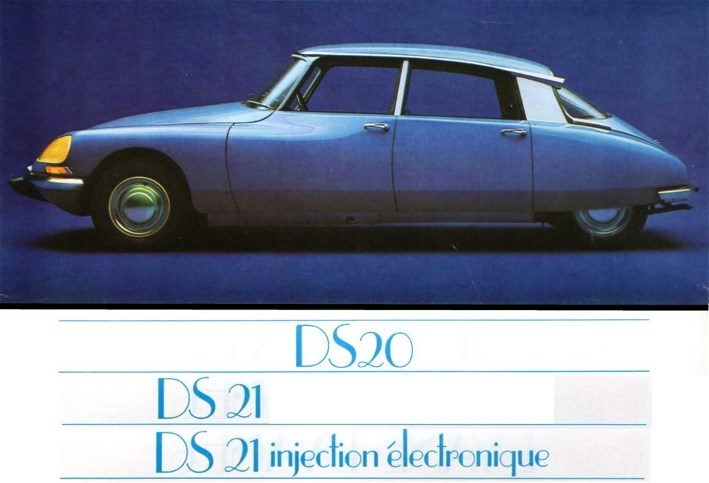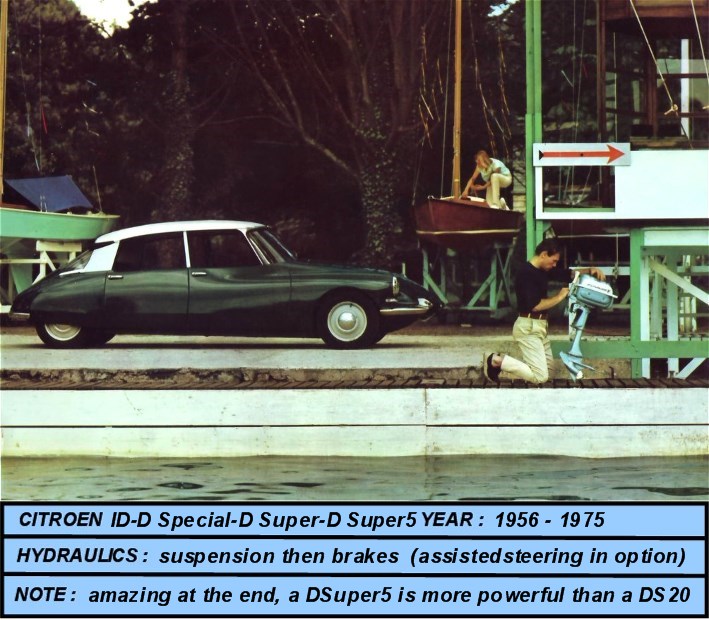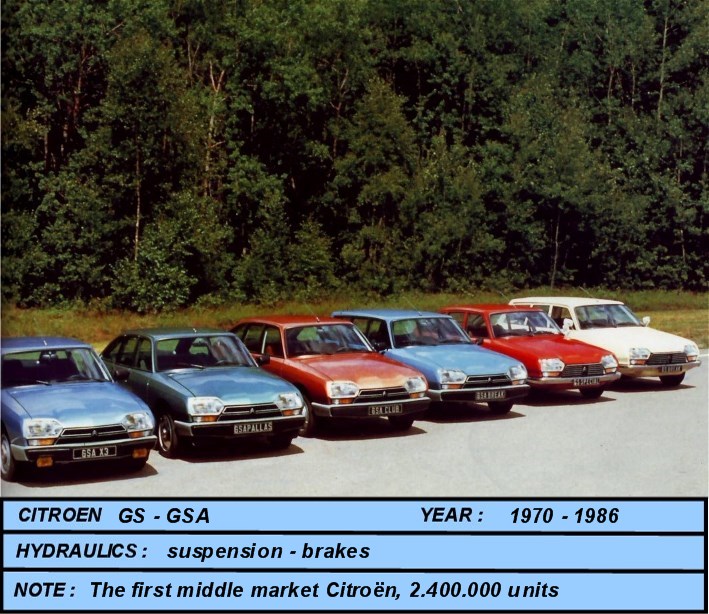-
You are currently viewing our forum as a guest which gives you limited access.
By joining you will gain full access to thousands of Videos, Pictures & Much More.
Membership is absolutely FREE and registration is FAST & SIMPLE so please, Register Today and join one of the friendliest communities on the net!
You must be at least 18 years old to legally access this forum. -
Hello Guest,
Thanks for remaining an active member on GayHeaven. We hope you've enjoyed the forum so far.
Our records indicate that you have not posted on our forums in several weeks. Why not dismiss this notice & make your next post today by doing one of the following:
- General Discussion Area - Engage in a conversation with other members.
- Gay Picture Collections - Share any pictures you may have collected from blogs and other sites. Don't know how to post? Click HERE to visit our easy 3-steps tutorial for picture posting.
- Show Yourself Off - Brave enough to post your own pictures or videos? Let us see, enjoy & comment on that for you.
- Gay Clips - Start sharing hot video clips you may have. Don't know how to get started? Click HERE to view our detailed tutorial for video posting.
Active and contributing members will earn special ranks. Click HERE to view the full list of ranks & privileges given to active members & how you can easily obtain them.
Please do not flood the forum with "Thank you" posts. Instead, please use the "thanks button"
We Hope you enjoy the forum & thanks for your efforts!
The GayHeaven Team.
You are using an out of date browser. It may not display this or other websites correctly.
You should upgrade or use an alternative browser.
You should upgrade or use an alternative browser.
High-Pressure Hydraulics by Citro?n
- Thread starter jeanlouis
- Start date
jeanlouis
V.I.P Member
- Joined
- May 22, 2009
- Messages
- 13,771
- Reaction score
- 26,694
- Points
- 113
Starting from 1965 on the Silver Shadow then Corniche, Camargue and in 1980 on the Silver Spirit, Rolls-Royce used some licenced Citroën hydraulic devices. It was central power (pump high pressure, regulator-ac ulator), brakes hydraulic command DS type and some suspension parts. The suspension of these cars remain by classic metallic springs but height body is constant and can be adjusted.
ulator), brakes hydraulic command DS type and some suspension parts. The suspension of these cars remain by classic metallic springs but height body is constant and can be adjusted.

Rolls-Royce Silver Shadow on the left and Silver Spirit on the right

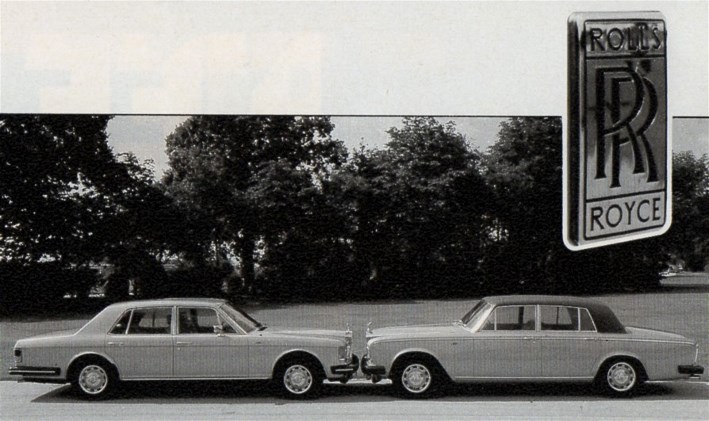



Rolls-Royce Silver Shadow ll 1977

Brakes command Rolls-Royce Silver Spirit on the left, Citroën DS on the right (rubber button A)
The brakes command of the Rolls is more progressive because the valve is not activated directly by the foot of the driver. It is a little hydraulic system that command the Citroën valve.
Automatic gear box on the Rolls-Royce and automatic clutch on the DS, the left pedal B on the photo is the park brake.
 ulator), brakes hydraulic command DS type and some suspension parts. The suspension of these cars remain by classic metallic springs but height body is constant and can be adjusted.
ulator), brakes hydraulic command DS type and some suspension parts. The suspension of these cars remain by classic metallic springs but height body is constant and can be adjusted.
Rolls-Royce Silver Shadow on the left and Silver Spirit on the right





Rolls-Royce Silver Shadow ll 1977

Brakes command Rolls-Royce Silver Spirit on the left, Citroën DS on the right (rubber button A)
The brakes command of the Rolls is more progressive because the valve is not activated directly by the foot of the driver. It is a little hydraulic system that command the Citroën valve.
Automatic gear box on the Rolls-Royce and automatic clutch on the DS, the left pedal B on the photo is the park brake.
Last edited:
D
dargelos
Guest
Times change and needs change with them.
The old way of using the ambulance was to get the patient in the back and on the way to hospital with as much speed as possible. A converted Citroen was ideal for this purpose sinde you could drive it very fast and still keep the patient comfortable. Today the aim is to stabilise the patient at the scene of the emergency, with that done the drive to the hospital can be done at a less frantic speed, so large vans have replaced converted cars.
The specialised camera car has become unnecessary now that film crews can use the Steadicam. This has its own shock absorbing system powered by two gyroscopes which alows for perfect pictures no matter how roughly the moving car shakes rattles and rolls.
So why not use gyros for car suspension too?. They would give a velvet smooth ride but at the cost of reduced acceleration, difficult braking and worsened fuel consumption, so no future with that idea. The advanced suspension systems of today, as used by the likes of Bugatti and Bentley, use predictive electronics, very expensive and so difficult understand that the Citroen hydraulics are childs play by comparison.
The old way of using the ambulance was to get the patient in the back and on the way to hospital with as much speed as possible. A converted Citroen was ideal for this purpose sinde you could drive it very fast and still keep the patient comfortable. Today the aim is to stabilise the patient at the scene of the emergency, with that done the drive to the hospital can be done at a less frantic speed, so large vans have replaced converted cars.
The specialised camera car has become unnecessary now that film crews can use the Steadicam. This has its own shock absorbing system powered by two gyroscopes which alows for perfect pictures no matter how roughly the moving car shakes rattles and rolls.
So why not use gyros for car suspension too?. They would give a velvet smooth ride but at the cost of reduced acceleration, difficult braking and worsened fuel consumption, so no future with that idea. The advanced suspension systems of today, as used by the likes of Bugatti and Bentley, use predictive electronics, very expensive and so difficult understand that the Citroen hydraulics are childs play by comparison.
jeanlouis
V.I.P Member
- Joined
- May 22, 2009
- Messages
- 13,771
- Reaction score
- 26,694
- Points
- 113
Times are changing and caravaning too. Hydropneumatic suspension was appreciated by caravan owners because of the body height constant what-ever the load at the rear. Today camping cars replace caravans. Indeed, there is a lot of domains where hydraulics Citroën lost its usefulness.


DS
[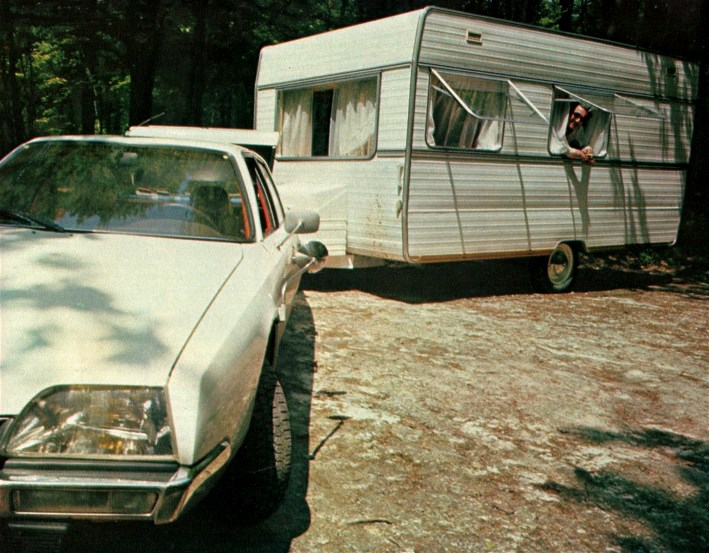




CX

BX

Even the GS with its small 1015 cm3 "boxer" engine had to tract this damned caravan. Today at a TV program, I eared that only Volkswagen made "boxer" engines air cooled in serie !


DS
[





CX

BX

Even the GS with its small 1015 cm3 "boxer" engine had to tract this damned caravan. Today at a TV program, I eared that only Volkswagen made "boxer" engines air cooled in serie !
Last edited:
jeanlouis
V.I.P Member
- Joined
- May 22, 2009
- Messages
- 13,771
- Reaction score
- 26,694
- Points
- 113
Various DS with various hydraulics

From the beginning to the end (1955-1975) the DS has been proposed with all the hydraulics assistances, suspension, brakes, steering, clutch-gear box. Here the first dashboard designed by Flaminio Bertoni, the designer of this model.

In 1956, on the new ID19, all these assistances excepted the hydropneumatic suspension are removed. The dashboard is also simplified. Externaly we find clutch and brakes classic pedals. Quickly (1961) new brakes hydraulics high-pressure appears. It is a simplifed valve as efficient as the one of the DS. The pedal remains traditionnal and allows straight away the identification beside of a DS that has a button command with or without rubber plot. On the ID19, the DS steering-power become available in option. Notice the long gearshift of the mechanical system on the right.

New dashboard of the DS (1962-1969)

Hydraulics gearshift on the left, mechanical on the right (two DS Pallas). Notice the rubber plot of brakes command of all the DS (see #3 of this thread) and the classic clutch pedal on the right photo.

New dashboard of ID 19 (1965-1969)
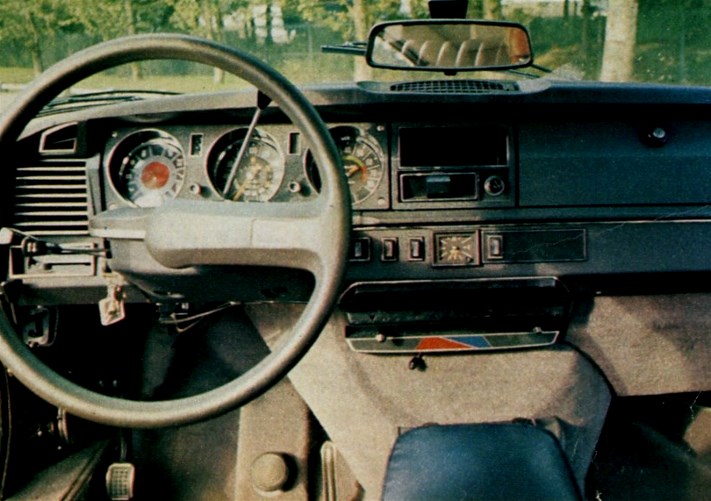
The new dashboard from 1970 to the end of fabrication, three circular dials, is common for all the DS. About marketing, there is no more ID, just DSpecial and DSuper.

In 1971, a gear box 5 gears replace the mechanical 4 gears of the DS 21 (in option on DSuper). On this photo, we can see the classic brakes pedal of the DSuper. Hydraulics gear box of the "true" DS ( ) remains with 4 gears. As allways mechanical or hydraulics DS are sold at the same price.
) remains with 4 gears. As allways mechanical or hydraulics DS are sold at the same price.

In 1972 a full automatic DS with Borg-Warner gear box (3 gears) is at last available.
The black gearshift is different from the one of hydraulics DS but it is at the same place.

In 1968 the ID estate customer can order (with a big price supplement) his car equiped of a DS hydraulics gear box. The estate version had already the brakes hydraulics command of the DS. Very rare model.

From the beginning to the end (1955-1975) the DS has been proposed with all the hydraulics assistances, suspension, brakes, steering, clutch-gear box. Here the first dashboard designed by Flaminio Bertoni, the designer of this model.

In 1956, on the new ID19, all these assistances excepted the hydropneumatic suspension are removed. The dashboard is also simplified. Externaly we find clutch and brakes classic pedals. Quickly (1961) new brakes hydraulics high-pressure appears. It is a simplifed valve as efficient as the one of the DS. The pedal remains traditionnal and allows straight away the identification beside of a DS that has a button command with or without rubber plot. On the ID19, the DS steering-power become available in option. Notice the long gearshift of the mechanical system on the right.

New dashboard of the DS (1962-1969)

Hydraulics gearshift on the left, mechanical on the right (two DS Pallas). Notice the rubber plot of brakes command of all the DS (see #3 of this thread) and the classic clutch pedal on the right photo.

New dashboard of ID 19 (1965-1969)

The new dashboard from 1970 to the end of fabrication, three circular dials, is common for all the DS. About marketing, there is no more ID, just DSpecial and DSuper.

In 1971, a gear box 5 gears replace the mechanical 4 gears of the DS 21 (in option on DSuper). On this photo, we can see the classic brakes pedal of the DSuper. Hydraulics gear box of the "true" DS (

In 1972 a full automatic DS with Borg-Warner gear box (3 gears) is at last available.
The black gearshift is different from the one of hydraulics DS but it is at the same place.

In 1968 the ID estate customer can order (with a big price supplement) his car equiped of a DS hydraulics gear box. The estate version had already the brakes hydraulics command of the DS. Very rare model.
Last edited:
jeanlouis
V.I.P Member
- Joined
- May 22, 2009
- Messages
- 13,771
- Reaction score
- 26,694
- Points
- 113
jeanlouis
V.I.P Member
- Joined
- May 22, 2009
- Messages
- 13,771
- Reaction score
- 26,694
- Points
- 113
Hydraulics gearshift of the DS : low pressure pump then centrifugal regulator

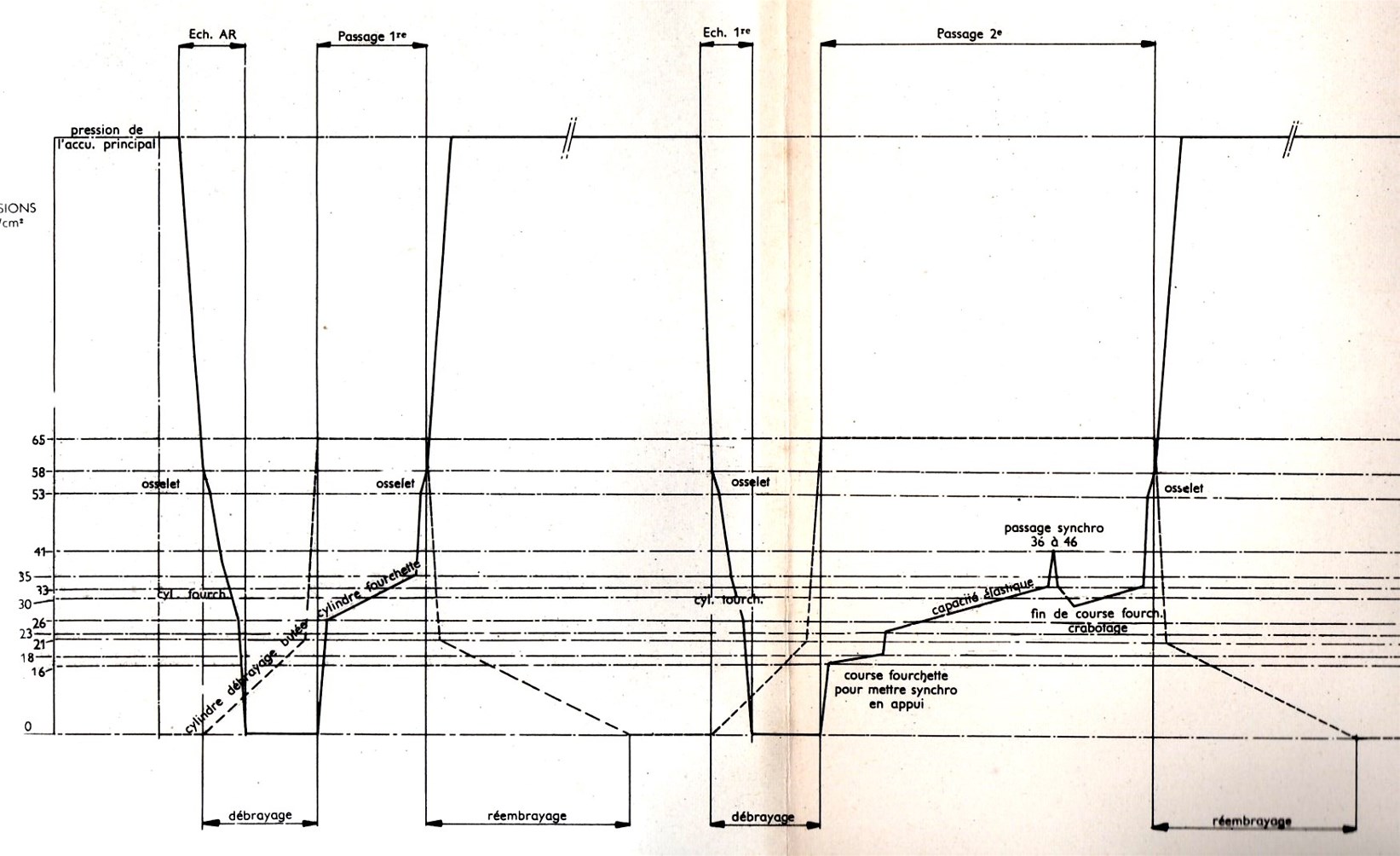
Manual actions for changing gears (letting out the cluth, changing gear, letting in the clutch) are carrying out by hydraulics on the DS. It was semi-automatic, a kind of sequential gearbox a longtime before those we know today. Clutch and gearbox were classical and a DS on pressure at the neutral point was allways out clutched. On the diagram above, the sequences of the gearbox : Verticaly, pressures in clutch and gear cylinders, horizontaly, the time.


On the first DS, a low-pressure pump just beside the water-pump managed clutch according to the speed of the engine. (high pressure in red, low pressure in brown)



In 1960, a centrifugal regulator driven by a belt replaced the low-pressure pump. Changing gear operations became faster.
Later this device will be used for the steering of the SM then the CX. (assistance regulation according to car speed)


Manual actions for changing gears (letting out the cluth, changing gear, letting in the clutch) are carrying out by hydraulics on the DS. It was semi-automatic, a kind of sequential gearbox a longtime before those we know today. Clutch and gearbox were classical and a DS on pressure at the neutral point was allways out clutched. On the diagram above, the sequences of the gearbox : Verticaly, pressures in clutch and gear cylinders, horizontaly, the time.


On the first DS, a low-pressure pump just beside the water-pump managed clutch according to the speed of the engine. (high pressure in red, low pressure in brown)



In 1960, a centrifugal regulator driven by a belt replaced the low-pressure pump. Changing gear operations became faster.
Later this device will be used for the steering of the SM then the CX. (assistance regulation according to car speed)
Last edited:
jeanlouis
V.I.P Member
- Joined
- May 22, 2009
- Messages
- 13,771
- Reaction score
- 26,694
- Points
- 113
1968 - 1975 : Citroën by Maserati
After Panhard and Berliet, in 1968 Citroën became majoritary shareholder by the famous italian constructor in difficulty at this time. About technical, at the beginning, there was no change on the new Maserati models.
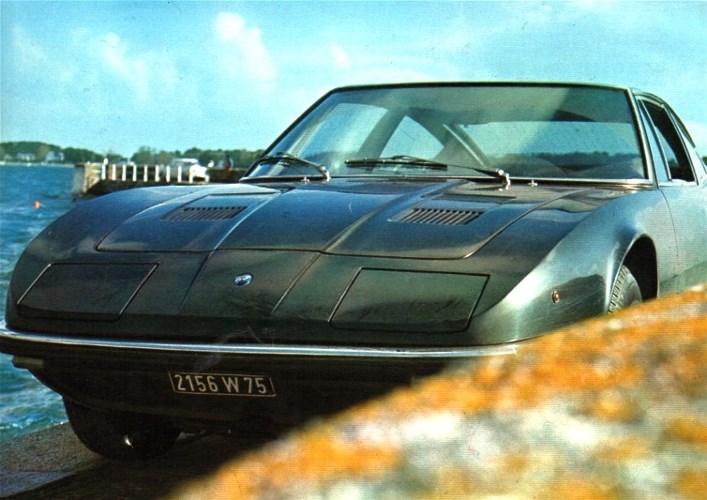
1969 - Maserati Indy

1971 - Maserati Bora

1972 - Maserati Merak
The V6 Maserati engine designed for the Citroën SM is assembled in central position on this "small Bora". It is a 3 liters version instead of a 2670 cm3 on the SM. Notice the dashboard and the wheel of the Citroën Maserati coach. The Maserati Merak use also the high-pressure brakes of this model.


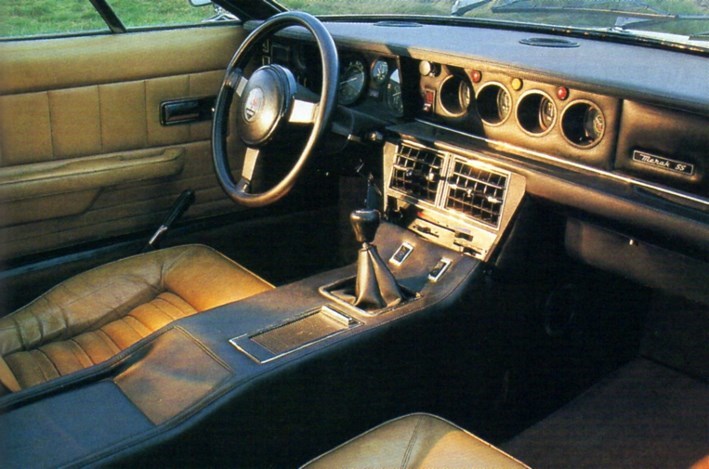

1976 - Maserati Merak SS
At its turn Citroën get controled by Peugeot that will create PSA group in 1976. Berliet is sold to Renault and Maserati liquitated, end of the SM !
Happily De Tomaso come and save the prestigious italian constructor. The equipment of the Merak become more classical but Citroën high-pressure power station for brakes is kept as you can see on the photo above. In 1983, the Merak is replaced by the Maserati Biturbo coach.



1973 - Maserati Khamsin
This new model use the V8 4.7 liters of the Bora assembled in front of the car. Khamsin coach has high-pressure assisted brakes and steering derived from the SM. Citroën increase its technical control by Maserati. End of production: 1981

1974 - Maserati Quattroporte ll
Assembled on a SM base, this saloon, the first and last Maserati front wheels drive, is a kind of SM four-doors. Only few units are producted before the end of Citroën by Maserati.
After Panhard and Berliet, in 1968 Citroën became majoritary shareholder by the famous italian constructor in difficulty at this time. About technical, at the beginning, there was no change on the new Maserati models.

1969 - Maserati Indy

1971 - Maserati Bora

1972 - Maserati Merak
The V6 Maserati engine designed for the Citroën SM is assembled in central position on this "small Bora". It is a 3 liters version instead of a 2670 cm3 on the SM. Notice the dashboard and the wheel of the Citroën Maserati coach. The Maserati Merak use also the high-pressure brakes of this model.




1976 - Maserati Merak SS
At its turn Citroën get controled by Peugeot that will create PSA group in 1976. Berliet is sold to Renault and Maserati liquitated, end of the SM !
Happily De Tomaso come and save the prestigious italian constructor. The equipment of the Merak become more classical but Citroën high-pressure power station for brakes is kept as you can see on the photo above. In 1983, the Merak is replaced by the Maserati Biturbo coach.



1973 - Maserati Khamsin
This new model use the V8 4.7 liters of the Bora assembled in front of the car. Khamsin coach has high-pressure assisted brakes and steering derived from the SM. Citroën increase its technical control by Maserati. End of production: 1981

1974 - Maserati Quattroporte ll
Assembled on a SM base, this saloon, the first and last Maserati front wheels drive, is a kind of SM four-doors. Only few units are producted before the end of Citroën by Maserati.
Last edited:
jeanlouis
V.I.P Member
- Joined
- May 22, 2009
- Messages
- 13,771
- Reaction score
- 26,694
- Points
- 113
D
dargelos
Guest
That's a handsome waggon, but my favourite for beauty is still the H van. It would be too far off topic to say anymore about the H here but I hope you dont mind if I bring in the Deux Chevaux.
If we were to draw a line representing the two opposite extremes of car design philosophy, at one end would be the SM with it's speed, glamour, expense and nightmare complexity. At the other end, we find something slow, ugly, cheap and as easy to repair as a bicycle, the 2CV. Both cars succeed in being what they were intended to be. Anyone can make something better by throwing money at it, that's all that Rolls Royce do. What takes genius is to make something better by making it cheaper. The VW Beetle was also intended to do the same job but the 2CV beats it by being cheaper to buy, cheaper to run, easier to repair, and immune to badly damaged roads. And one last thing; You could carry a sheep or a half tonne of potatoes in the back of your 2CV, you wouldn't want to do that with your SM or CX.
If we were to draw a line representing the two opposite extremes of car design philosophy, at one end would be the SM with it's speed, glamour, expense and nightmare complexity. At the other end, we find something slow, ugly, cheap and as easy to repair as a bicycle, the 2CV. Both cars succeed in being what they were intended to be. Anyone can make something better by throwing money at it, that's all that Rolls Royce do. What takes genius is to make something better by making it cheaper. The VW Beetle was also intended to do the same job but the 2CV beats it by being cheaper to buy, cheaper to run, easier to repair, and immune to badly damaged roads. And one last thing; You could carry a sheep or a half tonne of potatoes in the back of your 2CV, you wouldn't want to do that with your SM or CX.
jeanlouis
V.I.P Member
- Joined
- May 22, 2009
- Messages
- 13,771
- Reaction score
- 26,694
- Points
- 113
That's a handsome waggon, but my favourite for beauty is still the H van. It would be too far off topic to say anymore about the H here but I hope you dont mind if I bring in the Deux Chevaux.
If we were to draw a line representing the two opposite extremes of car design philosophy, at one end would be the SM with it's speed, glamour, expense and nightmare complexity. At the other end, we find something slow, ugly, cheap and as easy to repair as a bicycle, the 2CV. Both cars succeed in being what they were intended to be. Anyone can make something better by throwing money at it, that's all that Rolls Royce do. What takes genius is to make something better by making it cheaper. The VW Beetle was also intended to do the same job but the 2CV beats it by being cheaper to buy, cheaper to run, easier to repair, and immune to badly damaged roads. And one last thing; You could carry a sheep or a half tonne of potatoes in the back of your 2CV, you wouldn't want to do that with your SM or CX.
It is really to bad, actually a lot of H vans are becoming some ugly food trucks with a modern Ford Transit engine under the bonnet !
D
dargelos
Guest
Too true. The only way I will ever see an H in Britain is when its selling hot snacks. There is a company whose sole business is searching for old vans in France and bring them back for conversion. It must be humiliating for a Citroen to have to kept alive using an engine from Ford. At the time when the H was ahead of it's time in it's market, what Ford was making for that market was the Thames van, a design which was already obsolete before it left the factory. Very few of these are still around, the use of white metal bearings made the engine not worth repairing. One brand made vehicles that the owners wanted to keep for as long as possible, the other made ones that the owners were glad to get rid of after a few years. But who made the most money? Ford of course.
jeanlouis
V.I.P Member
- Joined
- May 22, 2009
- Messages
- 13,771
- Reaction score
- 26,694
- Points
- 113
Pneumatic and hydropneumatic suspensions by other constructors

In 1963, Daimler-Benz presented the Mercedes 600, a very sophisticated V8 saloon with pneumatic suspension. Later a still longer version will be available on request, the 600 Pullman with four lateral windows.

1968 - Mercedes 300 SEL 6.3 liter, it was the "small" body of the 300 SEL with the V8 6.3 l and the pneumatic suspension of the 600. The favorite car of various VIP in show-business for example.
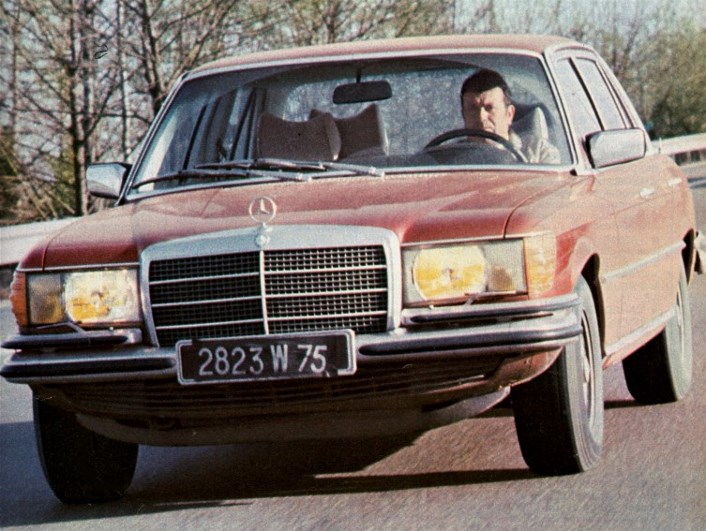
1975 - Mercedes equiped its new high-scale model of hydropneumatic suspension. It was the 450 SEL 6.9 l. Daimler-Benz kept at its catalog the 600 especially for the Vatican, Kings, Queens, Presidents ...
At this age if you appreciated the hydropneumatic confort and if you did not like Citroën GS or CX, you could allways buy a 450 SEL 6.9 l




Between 1925 and 1931, Messier a small french constructor made some cars with pneumatic suspension, named "sans ressorts" (without springs). This constructor was specialized in plane landing gears. It had patented one with an hydropneumatic system. Later Messier, Hispano and Bugatti were grouped in a aeronautic company, the SNECMA.

Andre Lefebvre, the boss of Citroën Research Office at the age of the DS (the "father" of this car), who had an aeronautic formation, began as designer in a company that made landing gears, maybe Messier. He certainly knew what was Messier hydropneumatic systems and it explains today why the DS had this suspension.

In 1963, Daimler-Benz presented the Mercedes 600, a very sophisticated V8 saloon with pneumatic suspension. Later a still longer version will be available on request, the 600 Pullman with four lateral windows.

1968 - Mercedes 300 SEL 6.3 liter, it was the "small" body of the 300 SEL with the V8 6.3 l and the pneumatic suspension of the 600. The favorite car of various VIP in show-business for example.

1975 - Mercedes equiped its new high-scale model of hydropneumatic suspension. It was the 450 SEL 6.9 l. Daimler-Benz kept at its catalog the 600 especially for the Vatican, Kings, Queens, Presidents ...
At this age if you appreciated the hydropneumatic confort and if you did not like Citroën GS or CX, you could allways buy a 450 SEL 6.9 l




Between 1925 and 1931, Messier a small french constructor made some cars with pneumatic suspension, named "sans ressorts" (without springs). This constructor was specialized in plane landing gears. It had patented one with an hydropneumatic system. Later Messier, Hispano and Bugatti were grouped in a aeronautic company, the SNECMA.

Andre Lefebvre, the boss of Citroën Research Office at the age of the DS (the "father" of this car), who had an aeronautic formation, began as designer in a company that made landing gears, maybe Messier. He certainly knew what was Messier hydropneumatic systems and it explains today why the DS had this suspension.
Last edited:
jeanlouis
V.I.P Member
- Joined
- May 22, 2009
- Messages
- 13,771
- Reaction score
- 26,694
- Points
- 113
Special feature of Hydragas Austin suspension


1974 - Austin Allegro used a simplified hydropneumatic system for its suspension. Without hydraulics high-pressure power station and working with the connection between front wheel and rear wheel of the same side, it was an evolution of the Mini Hydraulastic suspension. Mini was on rubber blocks then Allegro was on air cushions. Of course, the height body of Allegro was not adjustable neither constant whatever the load.
I already posted a thread where I compared Allegro to GS.
http://www.gayheaven.org/showpost.php?p=2678402&postcount=1005


1975 - Austin Princess 1800 HL



1975 - Austin Princess 2200 HLS with a rare cross aligned 6 cylinders engine. On the right photo, one of the four spheres of Hydragas suspension.

1980 - Austin Metro


1974 - Austin Allegro used a simplified hydropneumatic system for its suspension. Without hydraulics high-pressure power station and working with the connection between front wheel and rear wheel of the same side, it was an evolution of the Mini Hydraulastic suspension. Mini was on rubber blocks then Allegro was on air cushions. Of course, the height body of Allegro was not adjustable neither constant whatever the load.
I already posted a thread where I compared Allegro to GS.
http://www.gayheaven.org/showpost.php?p=2678402&postcount=1005


1975 - Austin Princess 1800 HL



1975 - Austin Princess 2200 HLS with a rare cross aligned 6 cylinders engine. On the right photo, one of the four spheres of Hydragas suspension.

1980 - Austin Metro
Last edited:
jeanlouis
V.I.P Member
- Joined
- May 22, 2009
- Messages
- 13,771
- Reaction score
- 26,694
- Points
- 113
Panhard before Citroën
Since its beginning until recently, Panhard has always made armour machine-gun vehicles then the cars production stopped in 1967.

1939 - Panhard presented AM 201, an armor prototype with 4 axles. Wheels of the two middle axles are named agricultural wheels and can be turned up with hydraulics jacks.



In 1951, four years before the DS, it is the apparition of EBR 75, an amazing armor vehicle. Like AM 201, the four agricultural wheels can be also get turned up but these middle axles have also an hydropneumatic suspension. This machine-gun vehicle is equiped with an hydraulics high-pressure central power a long time before Citroën cars.


The very flat EBR 75 engine is like the assemblage of 6 Dyna Panhard "flat-twins". This vehicle is so interesting, it could deserve a thread for only itself.

More recent, M8 vehicle is full hydropneumatic. We can see here the power of the hydraulics system. It is able to turn on itself!
Since its beginning until recently, Panhard has always made armour machine-gun vehicles then the cars production stopped in 1967.

1939 - Panhard presented AM 201, an armor prototype with 4 axles. Wheels of the two middle axles are named agricultural wheels and can be turned up with hydraulics jacks.



In 1951, four years before the DS, it is the apparition of EBR 75, an amazing armor vehicle. Like AM 201, the four agricultural wheels can be also get turned up but these middle axles have also an hydropneumatic suspension. This machine-gun vehicle is equiped with an hydraulics high-pressure central power a long time before Citroën cars.


The very flat EBR 75 engine is like the assemblage of 6 Dyna Panhard "flat-twins". This vehicle is so interesting, it could deserve a thread for only itself.

More recent, M8 vehicle is full hydropneumatic. We can see here the power of the hydraulics system. It is able to turn on itself!
Last edited:





















